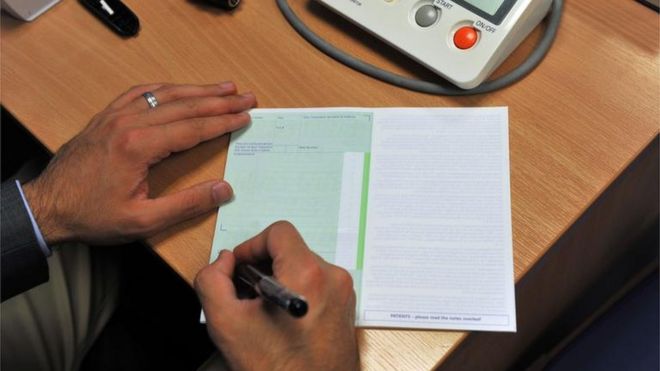Wednesday, 9 August 2017
Tuesday, 14 March 2017
The British Medical Association
 |
| who are the bma |
Two leading health unions are calling on the home secretary to make the NHS exempt from a new charge which will be payable on overseas doctors and nurses.
The British Medical Association and the Royal College of Nursing say the Immigration Skills Charge, coming into effect in April, threatens NHS budgets.
It will mean the NHS must pay £1,000 per year for any worker coming to the UK from outside the European Union.
The government has said it is committed to building home-grown skills.
Nurses remain on an official list of occupations of which the UK has a shortage.
Recruitment drive
The unions have written to Home Secretary Amber Rudd, saying they are "deeply concerned" about the effects of the new charge.
They fear current staffing problems could be made worse when the Immigration Skills Charge begins.
In the letter, seen by the BBC, the unions say the government has suggested funds raised from the charge would be reinvested back into the UK health system. But the unions say they have been given "no guarantees".
The £1,000 charge for workers on Tier 2 visas, payable upfront, will add a significant amount to the bill for any hospital planning an overseas recruitment drive.
An example given on the BMA website says that if a hospital wanted to employ a doctor on a Tier 2 visa for five years, the hospital trust would need to pay £5,000 upfront when applying to UK Visas and Immigration for a certificate of sponsorship.

The unions say diverting funding away from frontline budgets "cannot be appropriate" and they want health and social care staff to be exempt from the charge.
The charge is aimed at cutting down on the number of businesses taking on migrant workers and incentivising the training of British people to fill those jobs.
However, the unions have said the NHS will continue to be reliant on doctors from the EU and overseas because of the length of time it takes to train a senior doctor.
They added that there were limited places at UK medical schools and on nursing degree courses to build the workforce that the government wants.
But the government insists the charge would help to encourage investment in training.
There is a reduced rate of £364 per worker for "small and charitable" sponsors.
It will also not apply to those in PhD-level jobs and international students switching from student visas to working visas.
The unions said it would be "unfair" to penalise employers for recruiting people on Tier 2 visas when checks are already in place to make sure jobs are offered to UK and EU nationals first.
Monday, 2 January 2017
ogham inscriptions,
Transcribed ogham inscriptions, which lack a letter for /p/, show Primitive Irish to be similar in morphology and inflections to Gaulish, Latin, Classical Greek and Sanskrit. Many of the characteristics of modern (and medieval) Irish, such as initial mutations, distinct "broad" and "slender" consonants and consonant clusters, are not yet apparent.
More than 300 ogham inscriptions are known in Ireland, including 121 in County Kerry and 81 in County Cork, and more than 75 found outside Ireland in western Britain and the Isle of Man, including more than 40 in Wales, where Irish colonists settled in the 3rd century, and about 30 in Scotland, although some of these are in Pictish. Many of the British inscriptions are bilingual in Irish and Latin, but none show any sign of the influence of Christianity or Christian epigraphic tradition, suggesting they date before 391, when Christianity became the official religion of the Roman Empire; only about a dozen of the Irish inscriptions show any such sign.
The majority of ogham inscriptions are memorials, consisting of the name of the deceased in the genitive case, followed by MAQI, MAQQI, "of the son" (Modern Irish mic), and the name of his father, or AVI, AVVI, "of the grandson", (Modern Irish uí) and the name of his grandfather: for example DALAGNI MAQI DALI, "[the stone] of Dalagnos son of Dalos". Sometimes the phrase MAQQI MUCOI, "of the son of the tribe", is used to show tribal affiliation. Some inscriptions appear to be border markers.[
Old Irish, written from the 6th century on, has most of the distinctive characteristics of Irish, including "broad" and "slender" consonants, initial mutations, loss of inflectional endings, and consonant clusters created by the loss of unstressed syllables, along with a number of significant vowel and consonant changes including the presence of the letter p.
As an example, a 5th-century king of Leinster, whose name is recorded in Old Irish king-lists and annals as Mac Caírthinn Uí Enechglaiss, is memorialised on an ogham stone near where he died. This gives the late Primitive Irish version of his name (in the genitive case), as MAQI CAIRATINI AVI INEQUAGLAS.[4] Similarly, the Corcu Duibne, a people of County Kerry known from Old Irish sources, are memorialised on a number of stones in their territory as DOVINIAS.[5] Old Irish filed, "poet (gen.)", appears in ogham as VELITAS.[6] In each case the development of Primitive to Old Irish shows the loss of unstressed syllables and certain consonant changes.
These changes, traced by historical linguistics, are not unusual in the development of languages but appear to have taken place unusually quickly in Irish. According to one theory given by John T. Koch,[4] these changes coincide with the conversion to Christianity and the introduction of Latin learning. All languages have various registers or levels of formality, the most formal of which, usually that of learning and religion, changes slowly while the most informal registers change much more quickly, but in most cases are prevented from developing into mutually unintelligible dialects by the existence of the more formal register. Koch argues that in pre-Christian Ireland the most formal register of the language would have been that used by the learned and religious class, the druids, for their ceremonies and teaching. After the conversion to Christianity the druids lost their influence, and formal Primitive Irish was replaced by the then Upper Class Irish of the nobility and Latin, the language of the new learned class, the Christian monks. The vernacular forms of Irish, i.e. the ordinary Irish spoken by the upper classes (formerly 'hidden' by the conservative influence of the formal register) came to the surface, giving the impression of having changed rapidly; a new written standard, Old Irish, established itself.
More than 300 ogham inscriptions are known in Ireland, including 121 in County Kerry and 81 in County Cork, and more than 75 found outside Ireland in western Britain and the Isle of Man, including more than 40 in Wales, where Irish colonists settled in the 3rd century, and about 30 in Scotland, although some of these are in Pictish. Many of the British inscriptions are bilingual in Irish and Latin, but none show any sign of the influence of Christianity or Christian epigraphic tradition, suggesting they date before 391, when Christianity became the official religion of the Roman Empire; only about a dozen of the Irish inscriptions show any such sign.
The majority of ogham inscriptions are memorials, consisting of the name of the deceased in the genitive case, followed by MAQI, MAQQI, "of the son" (Modern Irish mic), and the name of his father, or AVI, AVVI, "of the grandson", (Modern Irish uí) and the name of his grandfather: for example DALAGNI MAQI DALI, "[the stone] of Dalagnos son of Dalos". Sometimes the phrase MAQQI MUCOI, "of the son of the tribe", is used to show tribal affiliation. Some inscriptions appear to be border markers.[
Old Irish, written from the 6th century on, has most of the distinctive characteristics of Irish, including "broad" and "slender" consonants, initial mutations, loss of inflectional endings, and consonant clusters created by the loss of unstressed syllables, along with a number of significant vowel and consonant changes including the presence of the letter p.
As an example, a 5th-century king of Leinster, whose name is recorded in Old Irish king-lists and annals as Mac Caírthinn Uí Enechglaiss, is memorialised on an ogham stone near where he died. This gives the late Primitive Irish version of his name (in the genitive case), as MAQI CAIRATINI AVI INEQUAGLAS.[4] Similarly, the Corcu Duibne, a people of County Kerry known from Old Irish sources, are memorialised on a number of stones in their territory as DOVINIAS.[5] Old Irish filed, "poet (gen.)", appears in ogham as VELITAS.[6] In each case the development of Primitive to Old Irish shows the loss of unstressed syllables and certain consonant changes.
These changes, traced by historical linguistics, are not unusual in the development of languages but appear to have taken place unusually quickly in Irish. According to one theory given by John T. Koch,[4] these changes coincide with the conversion to Christianity and the introduction of Latin learning. All languages have various registers or levels of formality, the most formal of which, usually that of learning and religion, changes slowly while the most informal registers change much more quickly, but in most cases are prevented from developing into mutually unintelligible dialects by the existence of the more formal register. Koch argues that in pre-Christian Ireland the most formal register of the language would have been that used by the learned and religious class, the druids, for their ceremonies and teaching. After the conversion to Christianity the druids lost their influence, and formal Primitive Irish was replaced by the then Upper Class Irish of the nobility and Latin, the language of the new learned class, the Christian monks. The vernacular forms of Irish, i.e. the ordinary Irish spoken by the upper classes (formerly 'hidden' by the conservative influence of the formal register) came to the surface, giving the impression of having changed rapidly; a new written standard, Old Irish, established itself.
A.D. 56 - c. 120
 Name: Cornelius Tacitus Dates: c. A.D. 56 - c. 120
Name: Cornelius Tacitus Dates: c. A.D. 56 - c. 120Occupation: Historian
Importance: Source on Imperial Rome, Roman Britain, and Germanic TribesTacitus Quote "It is the rare fortune of these days that a man may think what he likes and say what he thinks.
"Histories
I.1Tacitus
Quotes
Biography
Despite a political situation that had provided for his personal success, Tacitus was unhappy with the status quo. He lamented the previous century's reduction of aristocratic power, which was the price of having a princeps 'emperor'
Subscribe to:
Comments (Atom)